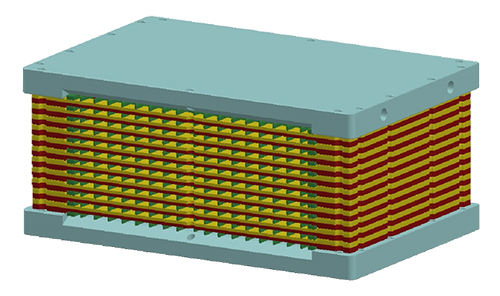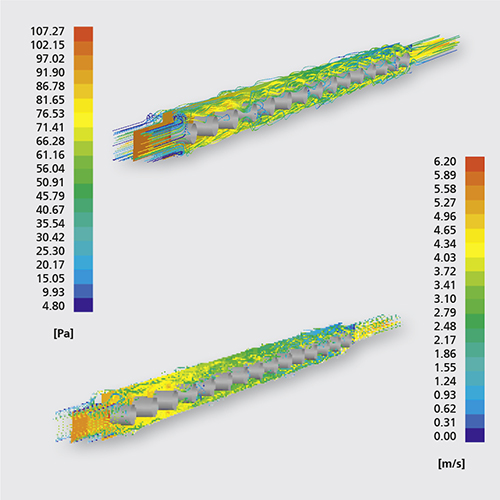Mathematical Modeling and Simulation
Sensible and latent heat transfers between the air and the desiccant take place through a hydrophobic membrane which is permeable only to the vapour phase, while the refrigerant undergoes phase changes. The project partners work in close collaboration to make possible the achievement of mechanical power savings up to 35-40 %.
Within the project mathematical modeling and computer simulations tasks are assigned to Fraunhofer ITWM. The simulation results are used at different stages of the developments, aiming at optimizing the design and the performance of the 3F-CMC (Fig.1). High pressures occur due to the usage of the desiccant, high temperature gradients appear during the operation, and therefore the first task of ITWM was to support proper sizing of the frames so that they mechanically sustain the pressures and the temperature gradients, and at the same time are not unnecessary tick.
Various studies on the mechanical stability were carried out in connection with this. Furthermore, the membranes separating air and desiccant are very thin and special spacer is used to support them in order to avoid deflection. The spacer, however, induces pressure losses in the air channel and it need to be optimized also with respect to air resistance (Fig.2 shows air flow simulations around spacer).
Concentration polarization can decrease the performance of 3F-CMC therefore 3D simulations of heat and mass transfer processes was carried out to better understand the vapor concentration dynamics. The final task assigned to ITWM is the modeling of the frost formation. The new air conditioning system should work at wide range of temperatures and humiditiy, therefore undesirable effects like frost formation should be studied in advance, and care should be taken to prevent them.


